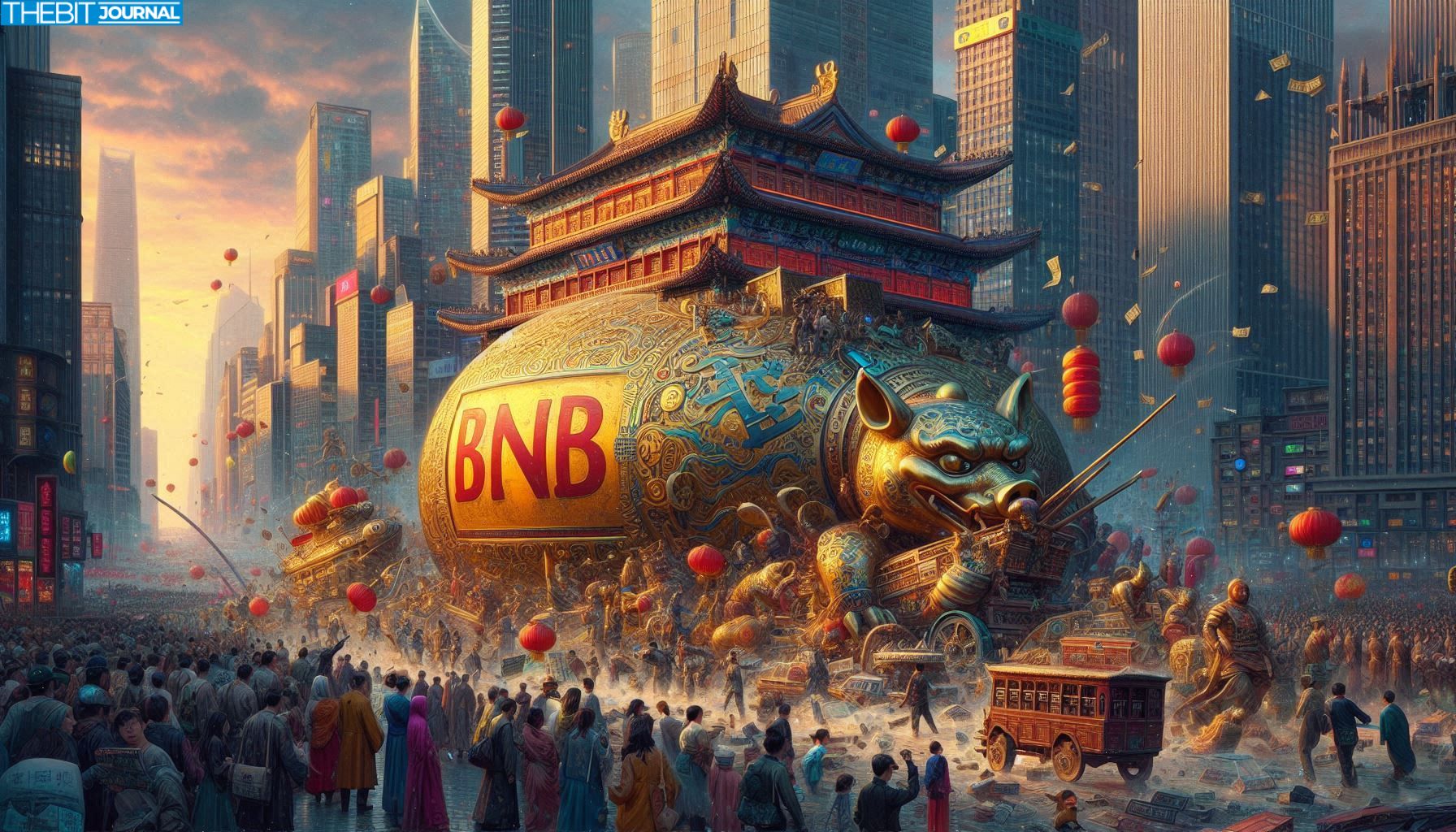China Renaissance to raise $600M for US-listed BNB treasury vehicle
0
0

According to the latest reports, China Renaissance Holdings Ltd is said to be in talks to raise $600 million to launch a publicly traded BNB treasury vehicle in the US. The fund will focus on accumulating $BNB, the native token of the BNB Chain, and mirror the corporate crypto accumulation model of Bitcoin treasury companies.
Sources say YZi Labs, the family office of Binance co-founder Changpeng Zhao, will co-invest with $200 million. This will be one of the largest institutional bets on a Binance-linked token to date.
$600M BNB Treasury Vehicle Genesis
Bloomberg reporters have revealed that China Renaissance is discussing setting up a US-listed digital-asset treasury company that will accumulate $BNB. In that structure, investors will effectively get exposure to $BNB through a regulated equity vehicle rather than direct token ownership.
The model is said to be the same as firms like Strategy Inc. that accumulate Bitcoin on their balance sheets.

The sources also reveal that China Renaissance and YZi Labs will commit $200 million between them, with China Renaissance putting in around $100 million in direct BNB holdings. The rest will come from institutional investors to be disclosed later.
Earlier in October, YZi Labs hosted a BNB Visionary Circle dinner in Singapore to bring together executives from other BNB treasury initiatives, signofying that the vehicle is already gaining traction in institutional circles.
Also read: BNB Nears Breakout After Nasdaq-Listed Firm Adds $160M to Corporate Treasury
Why a BNB Treasury Vehicle?
The push for a $BNB treasury vehicle comes from several converging trends. First, BNB has outperformed many peers, more than doubling in value in the past few months and setting new highs recently.
Institutional capital is showing an increasing appetite for infrastructure and tokens tied to major ecosystems. By structuring exposure through a regulated vehicle, investors get crypto-linked returns without having to handle token custody or protocol risks directly.
A dedicated $BNB treasury vehicle aligns with the growing trend of token-native infrastructure plays, DeFi on BNB Chain and ecosystem development driven by aligned capital. The vehicle will not only be a store of value but a deeper commitment to the BNB ecosystem’s growth.
Notably, China Renaissance is the first Hong Kong-listed financial institution to publicly commit to BNB accumulation, bridging traditional finance and crypto.
Market Response and Significance
The BNB treasury vehicle news caused a big stir in the crypto markets. $BNB price went up to around $1,313 and is near an all-time high.
This would be one of the largest single institutional investments into a Binance-linked token via a publicly traded entity. If successful, it could compete with existing BNB treasuries like CEA Industries, which already holds 480,000 BNB tokens with a combined value of tens to hundreds of millions.

Since this is a US listed vehicle, it could attract global institutional capital into $BNB, increase its legitimacy and liquidity. It also means Chinese financial institutions are willing to get more involved in token native strategies, perhaps more cross-border institutional moves to come.
Also read: BNB and BTC in Kyrgyzstan’s Treasury? CZ’s Bold Crypto Vision Explained
Conclusion
Based on the latest research, China Renaissance’s reported plan to raise $600m for a US-listed BNB treasury vehicle is a big institutional play in the crypto space. With YZi Labs, it bridges traditional finance and token native strategy by allowing regulated exposure to $BNB.
With BNB up and institutional demand rising, this could change how capital enters token ecosystems and BNB’s role in global crypto capital flows.
For in-depth analysis and the latest trends in the crypto space, our platform offers expert content regularly.
Summary
China Renaissance and YZi Labs plan a $600M U.S.-listed BNB treasury vehicle to accumulate token holdings. The regulated structure may draw institutional capital into $BNB, deepen liquidity, and redefine capital flows in crypto markets.
Glossary
BNB treasury vehicle: A public investment company to hold BNB tokens on behalf of investors.
YZi Labs: The family office formerly linked to Binance (led by Changpeng Zhao), is participating in this BNB fund.
Digital-asset treasury (DAT): A corporate or public entity that holds cryptocurrency assets on its balance sheet as part of its capital strategy.
Accumulation model: A strategy to buy assets (here, BNB) over time rather than all at once.
Publicly-listed structure: A fund or company whose shares can be traded on public markets, giving investors regulated exposure to underlying assets.
Frequently Asked Questions About BNB Treasury Vehicle
Why a BNB treasury vehicle in the US?
A US-listed entity offers regulated investors, reporting standards, and global capital visibility while conforming to securities frameworks.
What’s the anchor capital for this vehicle?
China Renaissance and YZi Labs will put in $200M, with China Renaissance contributing $100M.
Who else could compete with this BNB vehicle?
CEA Industries has one of the largest BNB treasuries among public firms with 480,000 BNB tokens.
How will this impact BNB’s price and liquidity?
Institutional accumulation through this vehicle will reduce circulating supply and increase liquidity depth, potentially reducing volatility.
Read More: China Renaissance to raise $600M for US-listed BNB treasury vehicle">China Renaissance to raise $600M for US-listed BNB treasury vehicle
0
0
 Manage all your crypto, NFT and DeFi from one place
Manage all your crypto, NFT and DeFi from one placeSecurely connect the portfolio you’re using to start.






